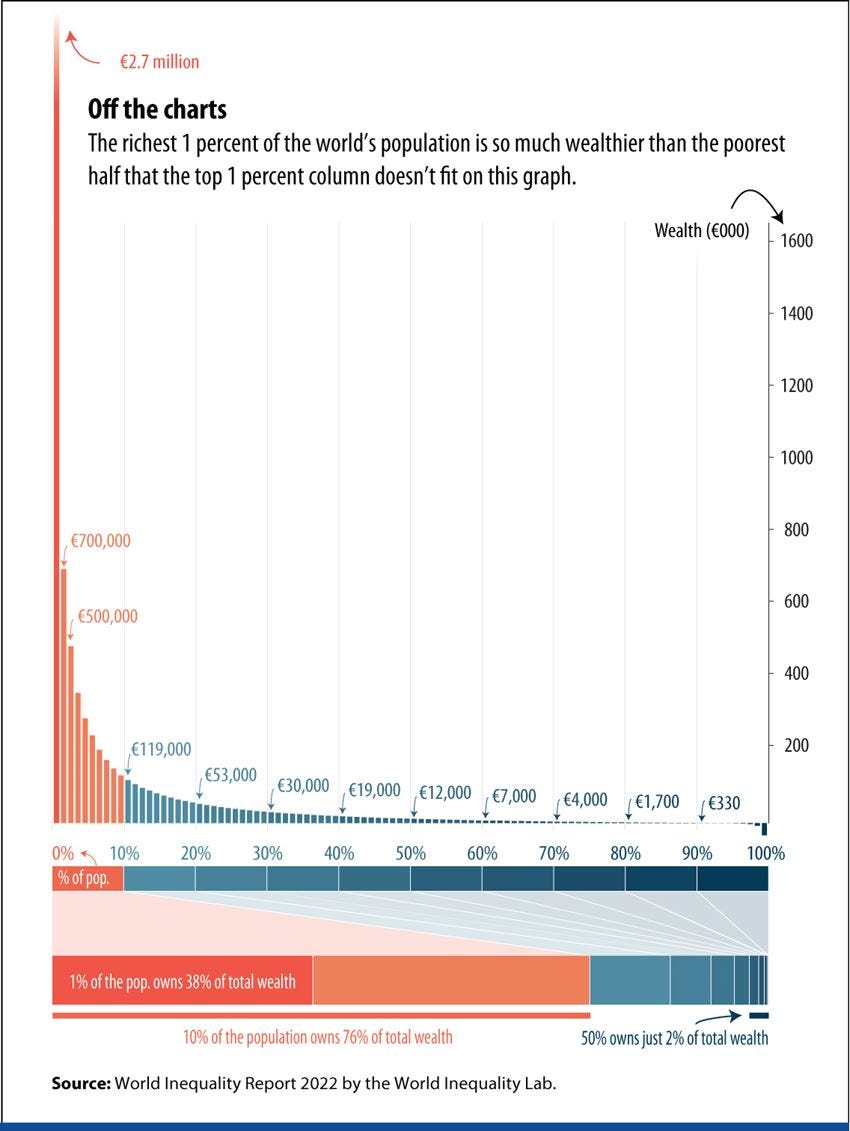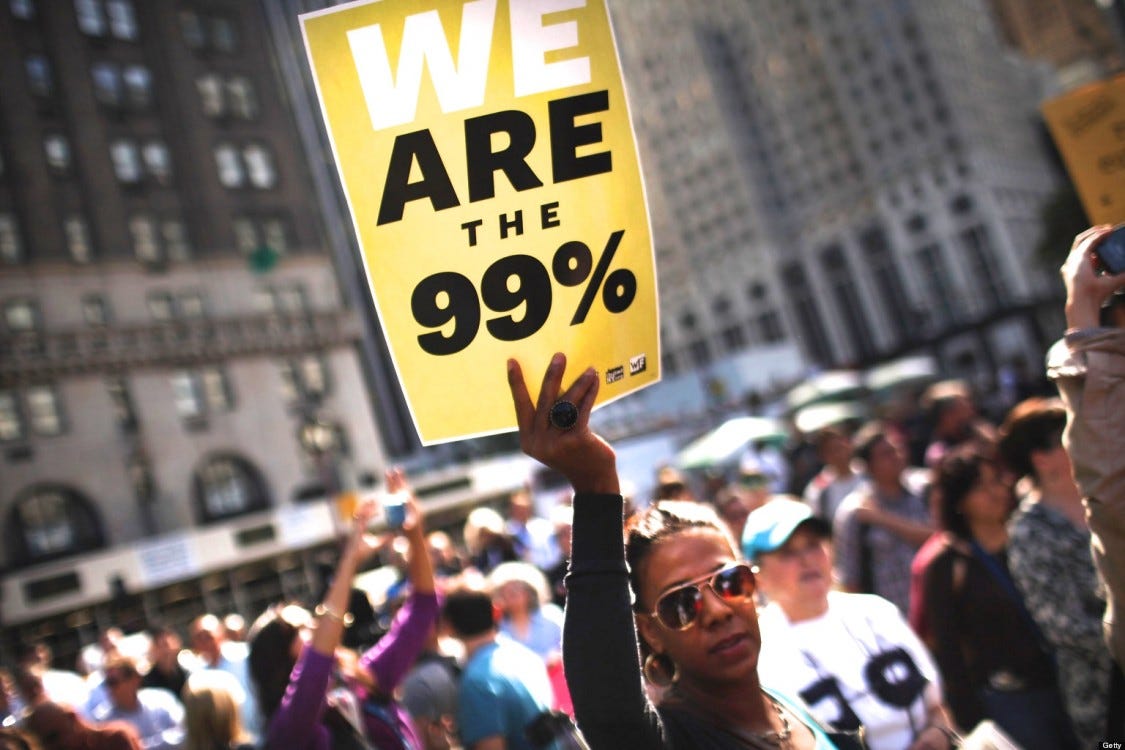It’s 5°C, the wind howls past the steps to St. Paul’s cathedral, uprooting recently pitched tents and shelters. Journalist, Patrick Kingsley, clambers into a borrowed tent that is kept from turning into a kite by the help of groceries and a sack of potatoes. Traffic and police helicopters buzz overhead and the cathedral bells ring on the hour, every hour. While he attempts the futile act of sleeping, a team of techies work through the night to establish a video link-up with camps like theirs in New York and Frankfurt.
It’s the early days of Occupy, and London, where Patrick is camping for a few days is one of what will become 952 protest camps held in the financial districts of the world’s major cities.
Occupy
Occupy was launched by Adbusters, a Canadian political magazine on September 17th, 2011. An occupation of Wall Street (moved on to the privately owned Zuccotti Park) soon spread to London and other cities across the world (sometimes under a different name). The occupations manifested as protest camps, people arrived with tents in the financial districts of major cities to protest the growing inequality between 99% and the richest 1% of the world’s population, which a year ago looked like this:

Not everyone involved with the movement camped. Some dropped in for a few hours a day, others supported the camps financially or with gifts of food, computer hardware, books, toys, and other vital provisions. Some gave of their professional time - chefs, tutoring, legal advice …
Patrick arrived on the fourth day of London’s Occupy. By then, the camp, which was quickly expanding, would be self-sufficient for the winter. A health and safety compliant kitchen, toilet and recycling facilities, a football club, a welcome tent, a tech tent, a library, a ‘university’, and a creche had already been organised. The camp was subdivided into groups which managed the different facilities. These also included legal, media, liaison and negotiation teams to maintain the spirit of peaceful protest when faced with opposition from regulatory powers, like the police.
Discussion groups, which could have as many as 500 participators were facilitated using a silent signalling system which had been developed during earlier anti-capitalist protests. Attendees had a means to express agreement, disagreement, a desire to contribute and even ‘shut up, you’ve held the floor for too long.’ The camp was like a strategic military operation which had been years in the planning.
Except it wasn’t.
Occupy had no leaders, only facilitators and every single person who joined the camp could offer their services as a facilitator. Individuals from diverse political and socio-economic backgrounds were united only by this:

Without a hierarchy, without policy, without even a specific agenda, peaceful direct, participatory democracy emerged. But as suddenly as the movement surfaced, it faded just as quickly. One year later there were no more camps, leading many journalists and academics to ask why it failed?
To me, this seems the wrong question to have asked. There are three ways in which the movement could be considered a success.
A couple of weeks ago, I introduced you to Paco Ayala based in Mexico City, who described himself as a ‘hojalatero social’, a social tinsmith or tinkerer. His work isn’t something he does alone, but is part of a community networked with other similar communities across the world.
With friends and neighbourhood supporters he established a community farm which is now so much more. In case you missed it before, he expresses his vision in the video below (10 mins) ↯
During the interview, he describes the space as “a bio-social laboratory of innovation” and the group as an “Occupy community”. This made me sit up straight. Wait. Didn’t Occupy end over a decade ago?
Wikipedia describes Occupy in the past tense, a movement that lasted for less than a year. Yet in small pockets of the world, it is still alive.
What Occupy started was a conversation. No demands arose out of the Occupy camps. The protest placards were as diverse as those who participated. However, there was a theme. They expressed anti-capitalist sentiment, and dissatisfaction with representative democracy, corporate greed and political corruption.
From the outside it looked like nothing was gained and gave rise to questioning of what it was the participators actually wanted to achieve? Occupy was about dialogue. Its key aim was to start a conversation where none was happening. As one former investment banker told Patrick:
Even if they don't have a solution, people still have the right to say 'no'," he says, pausing between each word. "It's only once people start saying 'no' that we will start thinking about what the solution could be.1
And thinking about that solution continues:
I believe that today, it is no longer this vertical, linear, centralised vision. We talk, here in the food garden, a lot about the importance of transversality and what transversality generates are networks like a spider web that weaves itself ... These spaces, these cultural-environmental-social centres that are in this same systemic vision then become these cells in dialogue with other cells that enable the co-creation towards a higher structure, in this social model where we can lower our carbon footprint, our water footprint. We are beginning to vibrate, we are beginning to synchronise. As this interchange begins to vibrate more, we are going to be the power source to move us towards a higher state of social organisation (Paco Ayala from the above video)
A continuation of this dialogue can be viewed as evidence of the movement’s success.
It’s a cliche, a true one, that the Occupy movements of 2011-12 changed the conversation2
The second way in which Occupy could be considered a success is that it showed how quickly people could come together and politically organise. It demonstrated the fragility of the current system of power and how change is possible. In short, it became a threat. So much so, the FBI was quick to use the term terrorist threat when referring to citizens’ enacted right to free assembly.3
As for the executives in corner offices and boardrooms around Wall Street and Canary Wharf, in state houses and Washington, are they relieved that the rabble were swept away? Do they believe that partial financial reforms will insulate them against risings to come? Beyond growing attention to public relations (probably a growth centre for future employment), are they mindful, as they make policy, that those who once awoke to fill the streets and parks may awaken again? Do they suspect, late at night, that youngsters in sleeping bags might turn out to be the modern equivalent of peasants with pitchforks?4
The 99% is an enormous and highly powerful proportion of the population if awake and emboldened to act.
Thirdly, Occupy became a model for following movements, including Climate Crisis. Without a hierarchical structure it showed how citizens could be given voice even if heard only within the confines of a camp. Participatory democracy has arisen in surprising organisations and it is to this element of Occupy’s success that I will shine the spotlight in the forthcoming issue of The Fiertzeside.
Up Next
Next week, we will travel to Porto Alegre in Brazil and analyse participatory budgeting on a larger scale than a temporary protest camp. Could direct democracy form part of a model for the future?
Embers
This week Notes became an extension of the conversation we’ve been having about trees, largely due to
’s intervention. Lorraine appreciated the synchronicity of theme in her inbox and shared a recent post by - subject trees. Sue is an artist who spent time studying neighbourhood trees. They feature(d) in an exhibition in a local book store and she has compiled twenty-four beautiful sketches into an ebook she is gifting to readers.






Thank you again Safar for the mention! As I read your newsletter I thought of the similar ways trees network together and the ways humans can network. Trees are a system of breathing for our planet. Community is a system of mental care/circulation. 🤔
Thank you again 💚💚💚
Thanks for the mention! I was blown away by the "synchronicity of trees" as you say; I wandered into another post about trees as well but I can't remember where that one was... I love how collections get created like that. 🙂 We live in a magical universe